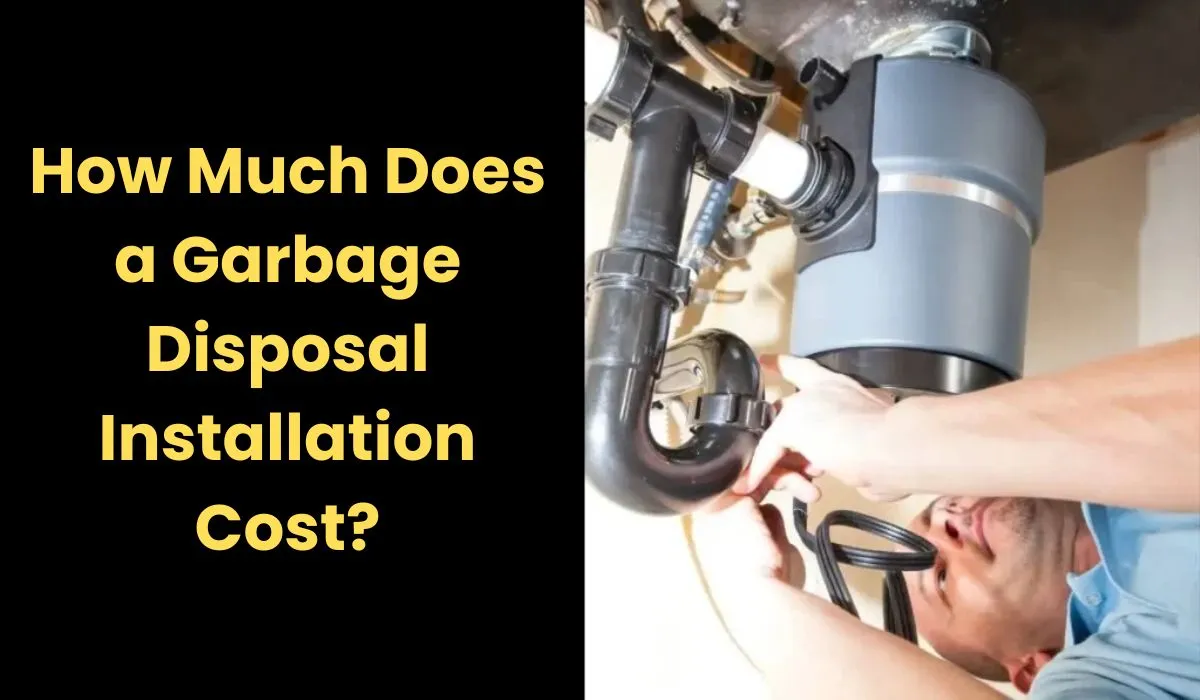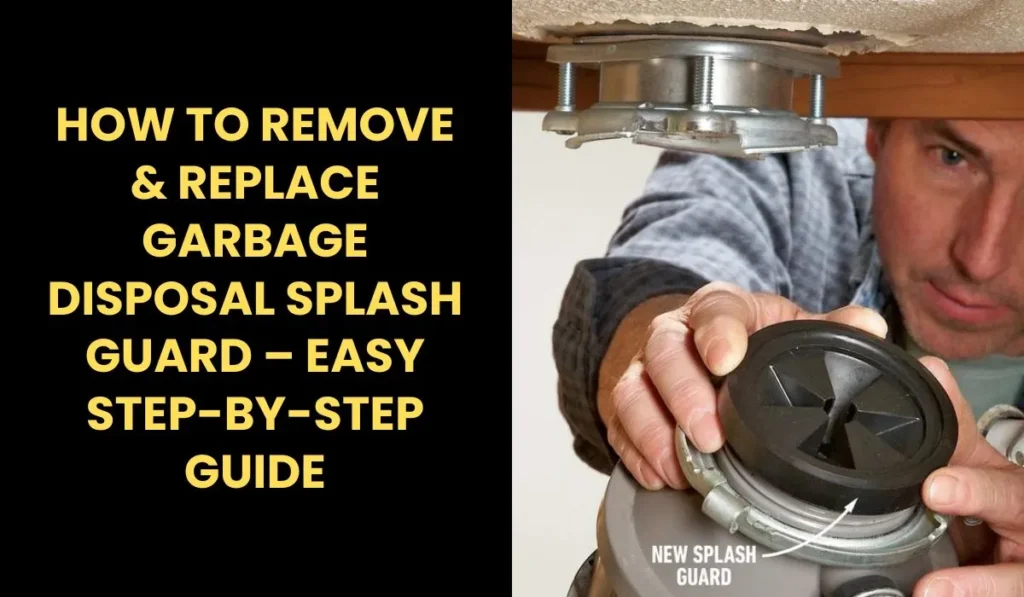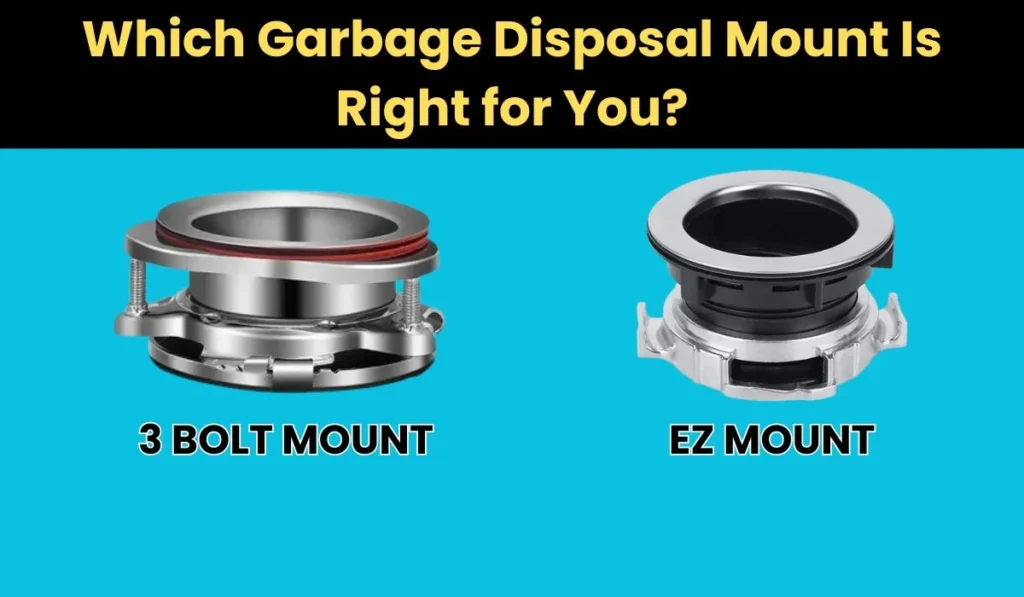How Much Does Garbage Disposal Installation Cost?
Installing a garbage disposal is a smart upgrade that makes kitchen cleanup quicker and more efficient. But before diving in, homeowners often wonder, how much does garbage disposal installation cost? The total expense usually depends on the unit’s horsepower, the complexity of the plumbing installation, and whether you hire a professional or take the DIY route. Understanding these factors helps you plan your budget better and avoid unexpected surprises.
This guide breaks down typical unit prices, plumber/electrician labor, and hidden variables like P-trap adjustments, dedicated circuits, and switch options. You’ll also get clear ranges for each scenario and simple ways to save, so you can budget with confidence and avoid surprise add-ons.
How much Average Garbage Disposal Installation Cost
| HP Rating | Best For | Motor Type (Common) | Approx. RPM | Typical Price |
|---|---|---|---|---|
| 1/3 HP | 1–2 people; light food scraps and soft waste | Induction (often) | 1,725–2,400 | $70 – $130 |
| 1/2 HP | 2–4 people; regular daily kitchen use | Permanent Magnet / Induction | 2,600+ | $110 – $175 |
| 3/4 HP | 3–6 people; frequent cooking and heavier scraps | Permanent Magnet (common) | 2,700 – 3,000+ | $175 – $300+ |
| 1 HP+ | 5+ people; large households or heavy cooking | Permanent Magnet | 3,000+ | $250 – $500+ |
What factors Affects the garbage disposals Price Most
1. Horsepower & Build Quality
The horsepower (HP) of your garbage disposal has one of the biggest impacts on price. A ½ HP unit is usually the smart choice for most average households of two to four people—it’s affordable and powerful enough for daily food waste. If you cook frequently or have a large family, consider upgrading to a ¾ or 1 HP model, which grinds tougher scraps with ease and tends to operate more quietly. Materials matter, too—disposals with stainless steel or composite grinding components last significantly longer than cheaper galvanized steel options, meaning fewer replacements in the long run.
2. Labor Complexity
Installation time is another key factor in your total cost. A simple replacement—swapping an old unit for a new one of the same type—usually takes only one to two hours. However, if your plumber has to adjust drain height or rework the P-trap, that adds both labor time and parts cost. For first-time installations, the complexity increases further since both plumbing and electrical work must be coordinated, making it the most expensive scenario.
3. Electrical Requirements
Electrical setup can make or break your budget. If there’s no grounded outlet under the sink or if the disposal will share a circuit that’s already overloaded, you’ll likely need a dedicated electrical circuit. This upgrade requires a licensed electrician and typically costs between $570 and $1,000. It’s a major reason new installations often cost far more than straightforward replacements.
4. Local Rates
Your location also affects what you’ll pay. Labor costs vary widely depending on where you live. In high-cost metro areas, rates for licensed plumbers and electricians tend to fall at the upper end of national averages. Meanwhile, homeowners in smaller towns or suburban areas may see more moderate pricing for the same job.
Should You DIY or Hire a Pro
When DIY Makes Sense
If you’re just replacing an existing unit with one that fits the same mount and drain setup—and there’s already a working outlet—you might be able to tackle it yourself. You’ll need to be comfortable using plumber’s putty, basic hand tools, and making clean, secure electrical connections. Doing it right can save you between $100 and $400 in labor costs.
When to Call Pros
However, if this is your first installation or the project involves electrical wiring, circuit work, or P-trap reconfiguration, hiring professionals is strongly recommended. Pros ensure code compliance, leak prevention, and safe wiring—especially when installing wall or air switches. Any visible leak, strange noise, or uncertainty about electrical safety is your sign to call in a licensed plumber or electrician.
Feed Type: Continuous vs. Batch
Garbage disposals come in two main feed types. Continuous-feed models are the most common—they activate with a wall or air switch and let you grind food waste as you go. They’re fast, convenient, and usually more budget-friendly. Batch-feed models, on the other hand, only operate when a magnetic stopper is securely in place. This makes them safer and often quieter, but they tend to cost a bit more due to their built-in safety features and sound insulation.
Materials Matter
The materials used inside your garbage disposal directly affect both durability and long-term maintenance costs. Entry-level models with galvanized steel chambers are affordable but prone to rust and corrosion over time. In contrast, higher-end units built with stainless steel or composite grinding components are far more resistant to wear and leaks. With proper use and regular cleaning, these premium models can last 10–12 years or longer, making them a better long-term investment despite the higher upfront price.
What Installation Labor Includes
Simple Replacement (Same Type/Size)
If your new garbage disposal matches the same size and type as your old one, you’re in luck — this is the simplest and most affordable installation scenario. The process is pretty straightforward: the installer removes the old unit, cleans the flange, mounts the new one, reconnects the drain line, and tests everything for leaks and smooth operation. In most areas, this type of swap runs between $80 and $200 in labor and usually takes about 1–2 hours. It’s clean, quick, and rarely needs extra parts.
Complex Replacement
Sometimes the new disposal doesn’t line up perfectly with the existing drain outlet — that’s where things get a bit more technical. The plumber may need to adjust the P-trap height or re-route the drain pipes to ensure proper alignment and flow. This extra effort means additional fittings, labor time, and cost — typically adding $50 to $200+ to your total. While not overly complicated, it does require experience to keep everything leak-free and code compliant.
Dishwasher Tie-In (If Applicable)
If your kitchen sink is connected to a dishwasher, the plumber will also handle a dishwasher drain connection. This includes removing the knockout plug on the disposal’s dishwasher port, setting up a high loop or air gap to prevent dirty water from backing into the dishwasher, and securing the hose and clamps. It’s a small but important step that ensures both appliances drain properly and stay hygienic.
Electrical: The Big Variable
Dedicated Circuit & Outlet
This is where installation costs can climb quickly. For safety and performance, garbage disposals should run on a dedicated 120-volt, 20-amp grounded circuit, or share one only with a dishwasher if your local code allows it. If there’s no outlet under the sink, an electrician will need to install a new circuit, which involves running wire from the main panel, adding a breaker, and often patching any drywall opened during the process. The price for this electrical work typically ranges from $570 to $1,000 — easily the biggest cost driver for new installations.
GFCI/AFCI Protection
Safety codes now require GFCI protection for any outlet within six feet of a sink — and in many places, AFCI protection is also mandatory. These measures prevent electrical shock and fire hazards in wet environments. Even if your garbage disposal is hardwired rather than plugged in, upgrading to a GFCI breaker adds an extra layer of protection and keeps your setup compliant with modern standards.
Switch Options: Wall vs. Air
Finally, there’s the matter of how you’ll turn the disposal on. The traditional wall switch setup works fine but can be labor-intensive if wiring has to be run through cabinets or walls. On the other hand, an air switch is a modern, elegant solution — a small button installed on your countertop that connects via a simple air tube to a control box under the sink. It’s safer (no live electricity at the switch), looks cleaner, and is especially great for island sinks. Air switch kits usually cost between $40 and $100 and are faster to install than traditional wiring.
⚡ Safety Reminder: Whether you’re resetting, repairing, or retrieving something from your disposal, never trust the switch alone. Always cut power at the breaker before doing any hands-on work.
Further Reading:
Corded vs. Non-Corded Garbage Disposal: Choosing the Best for Your Kitchen
Garbage Disposal Parts
How To Wire A Garbage Disposal – A Complete DIY Guide
3 Bolt vs EZ Mount: Which Garbage Disposal Mount is Best?
How to Install a Garbage Disposal
Conclusion
For most homes, a ½-HP continuous-feed model with quality internals hits the sweet spot on price, power, and reliability. If you’re replacing an old unit and already have a grounded outlet, the total installed cost is usually modest—often $190–$575 depending on complexity. If you’re adding a disposal for the first time, budget primarily for electrical work; that’s what pushes projects into the $780–$1,400+ range.
Keep it running for a decade or more with simple maintenance: cold water, no grease/fibers, and a quick ice clean each month. And remember—before any service or retrieval, turn off the breaker. That one habit protects both you and your investment.
The Author

I’m Muhammad Nabeel Dar, an employee in waste management and the owner of Garbage Waste Disposal with more than four years of experience helping people to control waste and garbage disposals are the best tools to control it. Read more







